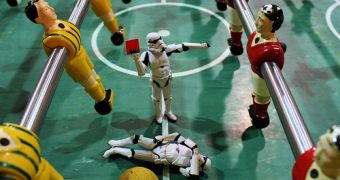Researchers from Trinity College Dublin have established betting trends during the 2007-2008 Champions' League Tournament, and found out what is the motivation behind betting behavior during half-time.
There are some differences between online football gamblers' behavior during a game and during half-time, but the question is why.
What motivates football gamblers to change betting behavior when play is not underway?
For the study they used data from Betfair.com, and analyzed bets made during every game of the tournament.
They found out that there were changes in the market odds, changes that reflected the real events during the match, events such as goals scored.
This type of behavior resembles that of traders on the stock market, so after comparing the two, the researchers became more interested in the activity of gamblers during half-time.
The reason behind this interest is given by the fact that football gamblers have no news from the game during half-time, so they are only guided by their beliefs and inclinations, when it comes to betting.
Identifying this behavior is like deciphering the complex interactions of stock market traders, only that in this case, “such a clear elimination of external news influences would be difficult to achieve in the case of stock market prices or foreign exchange rates,” says Stephen Hardiman from the School of Physics at Trinity College Dublin.
Apparently, even during half-time, market fluctuations remain, but there is more trading on small odds results, which only suggests that football gamblers will probably trade bets on the favorite to win.
The researchers say that “one might assume that memory of a team's past glories, media speculation over the health of key players, or just an overwhelming desire to see your own team win could bias a gambler's judgment.
“Gambling markets and financial markets have much in common, but possess unique differences.
“What we learn from gamblers may provide insight into the equally complex world of finance.”
The research was published today, Thursday 7 October 2010, in New Journal of Physics.

 14 DAY TRIAL //
14 DAY TRIAL //